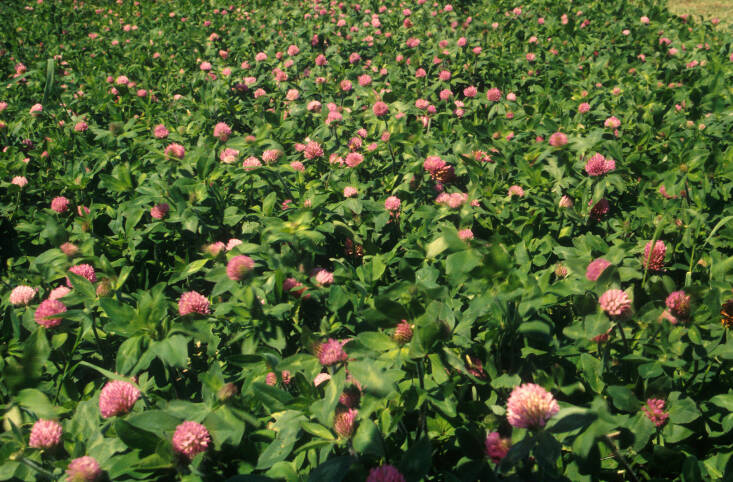There is a wonderful product to give your plants a growing boost. It takes time to work—about two to three months—but it doesn’t require too much effort, nor does it cost very much. For a small garden, you could spend less than 10 dollars. This easy and affordable way to improve your garden’s fertility? Green manure. Sadly, it doesn’t come from green cows. In fact, it doesn’t come from any animal at all.
What is green manure?

Green manure is essentially a cover crop, planted in late summer or early fall, that gets tilled back into the soil in spring. It generally consists of plants in the legume family (peas and beans) that improve soil nutrition and structure by fixing nitrogen and adding organic matter. When they are incorporated into the soil, they become an effective amendment.
What are the advantages of using green manure?

Andrew Bunting, VP of Horticulture at the Pennsylvania Horticultural Society explains: “Benefits include nutrient upcycling, weed suppression, adding organic matter, erosion control, help with soil fertility, and soil structure.” All of which, he says, “contributes to better water filtration, more pollinator habitats, and improved biodiversity. Certain legumes such as hairy vetch, field peas, white, red, and crimson clovers are also able to fix atmospheric nitrogen and make it available in the soil.”
Why not just use compost?
While compost certainly has its place in the garden, Bunting says green manure has an advantage. “Compost does not help with soil structure or weed suppression and bringing pollinators to the garden.”
How to integrate green manure into your home garden?

Your local cooperative extension office can help you find the right plant for your use and your climate. Generally, green manure is sown off-season, in the late summer and early fall, with crops that can either overwinter or are winter-killed. Crops such as winter rye and hairy vetch are winter-hardy, whereas buckwheat and field peas are killed by the cold. The plants are allowed to grow for two to three months, then cut down before they go to seed, chopped up, and tilled back into the soil in early spring in time for growing season. Something to keep in mind, particularly if you live in a warmer climate with mild winters: the bed will be out of use for sowing plants until spring and at least one month after tilling.
What plants make good green manure?
Some good suggestions are legumes like crown vetch, hairy vetch, and clovers; grasses like winter rye and sorghum; and buckwheat—all of which germinate quickly. Want to wait a bit and sneak in another harvest? Plant some clover, which can germinate in temperatures as low as the 40s. Whichever you choose, make sure you read the instructions specifically for sowing as a cover crop. Seeds sown for cover crops are sown at a much higher rate than seeds sown for harvest. You want a thick carpet of plants.
See also:
(Visited 3,381 times, 4 visits today)

